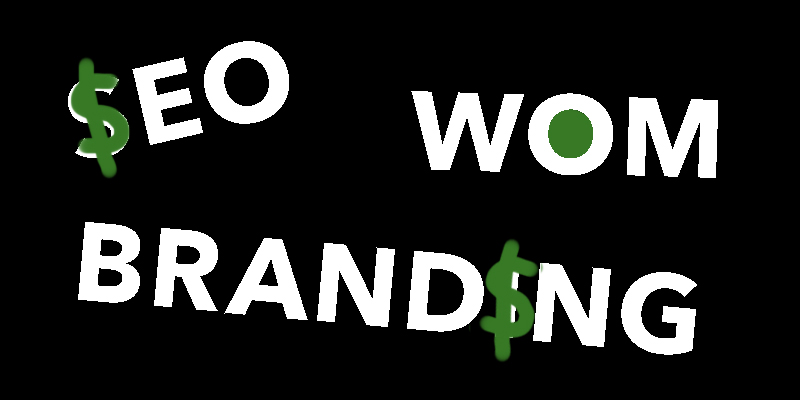i’ve noticed “infighting” among marketers who can’t help but pitch their speciality as Mother Superior.
one guy says SEO is “where it’s at,” another 10x-d his last client’s revenue using Facebook ads.
should you play the long game or short game? do you have to choose?
sweat
say your company blog has 25 posts that rank page 1 and collectively drive 50,000 organic visitors to your content every month.
you could calculate 50,000 visitors * $0.50 CPC and claim $25,000 in “free” marketing, but how much did you spend to write and grow those posts?
a full time content marketer plus a little paid promotion to encourage social shares means you’re really spending $5-10k /month on labor + tools and it took you 8 months to write those 25 posts.
this assumes you wrote 6 posts per month and about half of them (24/48) immediately took a slot on Page 1. doubtful. now it’s $5-10k /month * 8 months thus you’ve spent at least $40,000 on content. not $0.
next, consider that driving 50,000 visitors to your homepage is probably going to convert a lot more product signups than 50,000 blog visitors. sometimes my own blog posts get 15k+ views in a day and… 15 new email subscribers.
drive 15,000 people to Fomo.com? 100s of registrations with a credit card.
time
another popular strategy charlatan marketers use to mischaracterize CAC (customer acquisition cost) is claiming that if you build a personal brand you can sell things on your “reputation alone.”
speaking as someone with a teeny tiny personal brand, i can confirm my public nature and amazing tweets help sell products and content.
BUT, i also spent 9 years sharing nothing but value (free stuff) before i ever tweeted a single “buy now” URL.
assuming i spent just 45 minutes per day on Twitter, for 9 years, with 2 weeks off per year for funerals and long flights, that’s 45 mins * 50 weeks * 9 years or 337.5 hours of free labor.
obviously i’ve invested a lot more than 337 hours on Twitter, but the point is while i have sold thousands in goods and services through direct messages, a junior sales person could beat this in 8 weeks (337.5 hours / 40 hour week) with cold email.
social capital
finally, and this one is dedicated to ecommerce bros, it’s intellectually lazy to claim referral programs are the easiest path to new customer acquisition.
besides some solutions being unshareable, this conviction ignores the second-order consequence of a given referral moment.
if i enjoy the taste of a burger at Joe’s Burger Shack, but the service was slow and it was expensive, i might still recommend it to you but if you don’t love the experience it will cost me social capital.
there is X volume social capital between any two people and it’s only replenished when a prior outflow pays itself back with interest.
many people, marketers included, specialize in expending the social capital of their customers and never “pay back” the net trust lost by referrals made under duress.
do the math
however you acquire customers, there’s a cost in achieving their attention. but instead of calculating just the dollar amount, consider the currency, too.

i agree; cost (when not in dollars) tends to be easily (and wrongly) discounted.